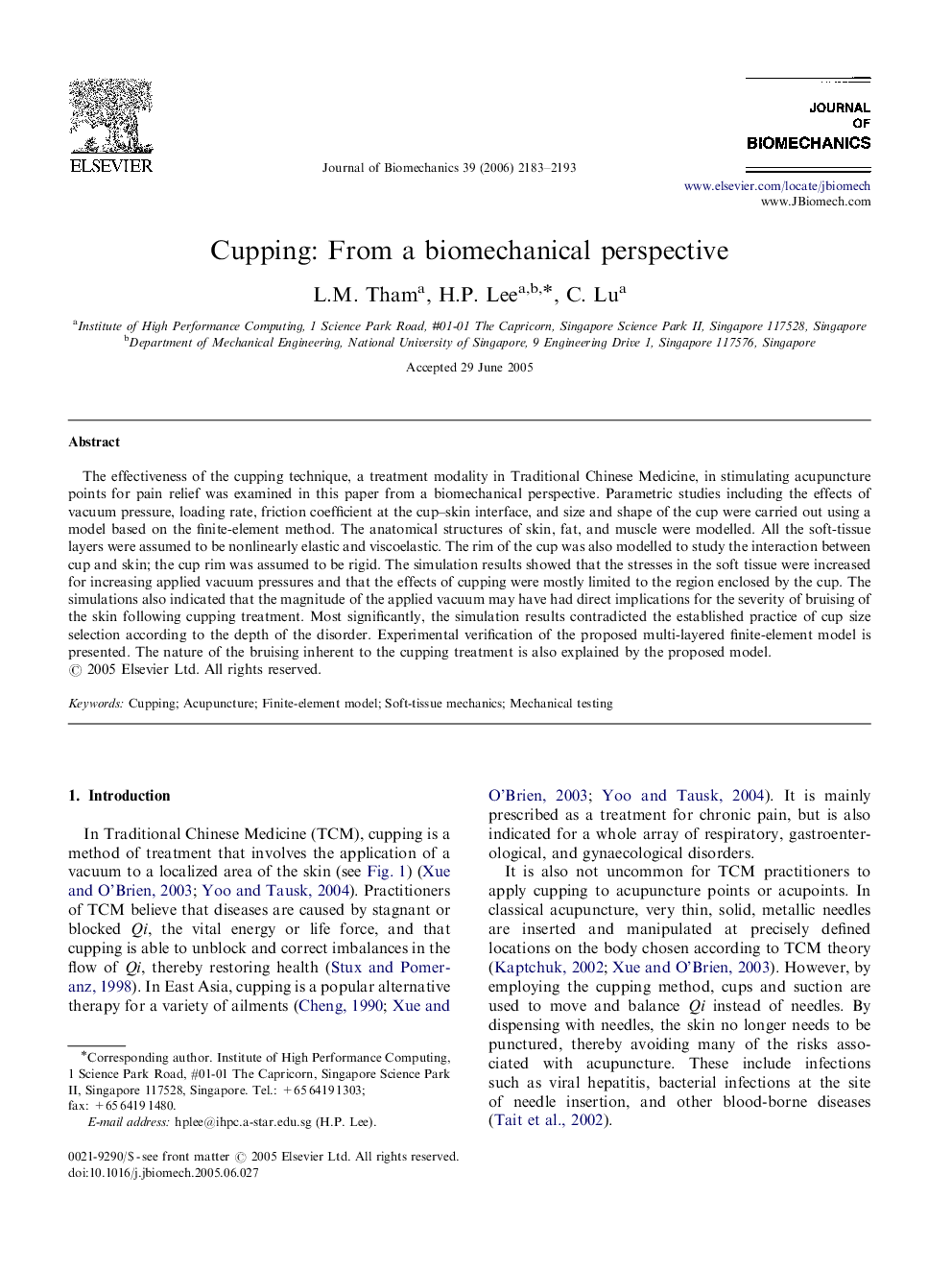| Article ID | Journal | Published Year | Pages | File Type |
|---|---|---|---|---|
| 875386 | Journal of Biomechanics | 2006 | 11 Pages |
The effectiveness of the cupping technique, a treatment modality in Traditional Chinese Medicine, in stimulating acupuncture points for pain relief was examined in this paper from a biomechanical perspective. Parametric studies including the effects of vacuum pressure, loading rate, friction coefficient at the cup–skin interface, and size and shape of the cup were carried out using a model based on the finite-element method. The anatomical structures of skin, fat, and muscle were modelled. All the soft-tissue layers were assumed to be nonlinearly elastic and viscoelastic. The rim of the cup was also modelled to study the interaction between cup and skin; the cup rim was assumed to be rigid. The simulation results showed that the stresses in the soft tissue were increased for increasing applied vacuum pressures and that the effects of cupping were mostly limited to the region enclosed by the cup. The simulations also indicated that the magnitude of the applied vacuum may have had direct implications for the severity of bruising of the skin following cupping treatment. Most significantly, the simulation results contradicted the established practice of cup size selection according to the depth of the disorder. Experimental verification of the proposed multi-layered finite-element model is presented. The nature of the bruising inherent to the cupping treatment is also explained by the proposed model.
